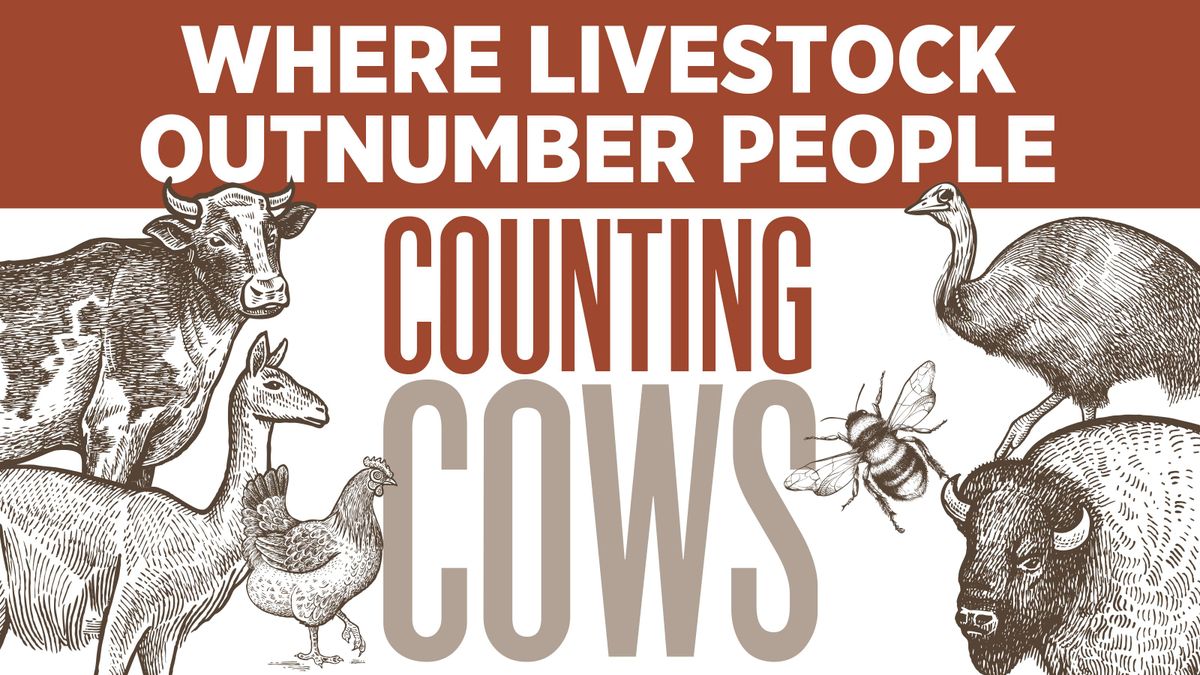From alpacas to poultry, agriculture census shows Washington’s farming roots

In seven Washington counties, cows outnumber people.
That’s not just a fancy way to say “not many people live in Garfield County,” though the southeastern wheat-farming county of 2,200 people does top the per capita cattle list, with some 8,050 cows.
In larger farming counties, including Yakima, Franklin and Grant, humans still are outnumbered by their bovine neighbors. Yakima County has more than a quarter-million cattle, outnumbering every other county: 258,683 to be exact. About 100,000 of them are milk cows.
The numbers come from the federal agricultural census, a comprehensive survey of a wide range of products.
The U.S. Census has been in the news as the Census Bureau works to finalize questions and methodology for the 2020 count of the U.S. population. But its less well-known cousin, the Department of Agriculture’s census, is underway now. It’s a count of U.S. farms done every five years.
That’s right. Cattle get counted more often than people.
The latest numbers are from 2012, and 2017 results should come out next February, said Chris Mertz, the director for USDA’s agricultural statistics service in the northwest region, which includes Washington, Oregon, Idaho and Alaska.
The census measures far more than animal populations. On the 24-page form, farmers are asked how much acreage they farm, the animals and crops they raise, the sale value of products and their own demographics.
Mertz said the results go much further than the USDA. They can help determine federal funding for programs targeting rural areas, provide information to businesses looking to sell products in the agricultural sector and give insight into topics like irrigation practices and the prevalence of organic farming.
“The better data we have, the better decisions can be made,” he said.
The definition of a farm is broad. Anyone who sold more than $1,000 in agricultural products or produced enough that they could have sold that much in a year should be counted.
“Some people don’t think they are a farm, so they may not respond to it,” Mertz said.
So far, just 57 percent of Washington farms have responded to the census. In 2012, the USDA got a 78 percent response rate after follow-up interviews and phone calls.
The deadline for response technically passed in February, but farmers can still send their forms in, fill them out online at agcounts.usda.gov or call (888) 424-7828.
The agricultural census documents many of the trends well-known to Washington farmers: their average age is increasing, and more and more farms are consolidating.
Mertz said recent years have seen growth in very small niche producers and large operations, with medium-sized farms going away.
Even for city dwellers with no green thumb or desire to raise chickens, the census is a cornucopia of information about the Evergreen State.
Where else could you learn that officially, Spokane is home to 257 turkeys?
There’s no official count for the wild turkey population strutting across the city, though anyone who’s suffered through a turkey-caused traffic jam would have to assume the wild birds outnumber their domesticated cousins.
Another fun fact?
If you’re a fan of alpacas, head to Western Washington, where you’ll find 2,348 of the fluffy creatures in Thurston County, with sizable numbers in King and Clark counties.
But if you prefer their larger, ill-tempered cousins?
Spokane leads the state in llama population, with 518. Just try not to get spit on.
